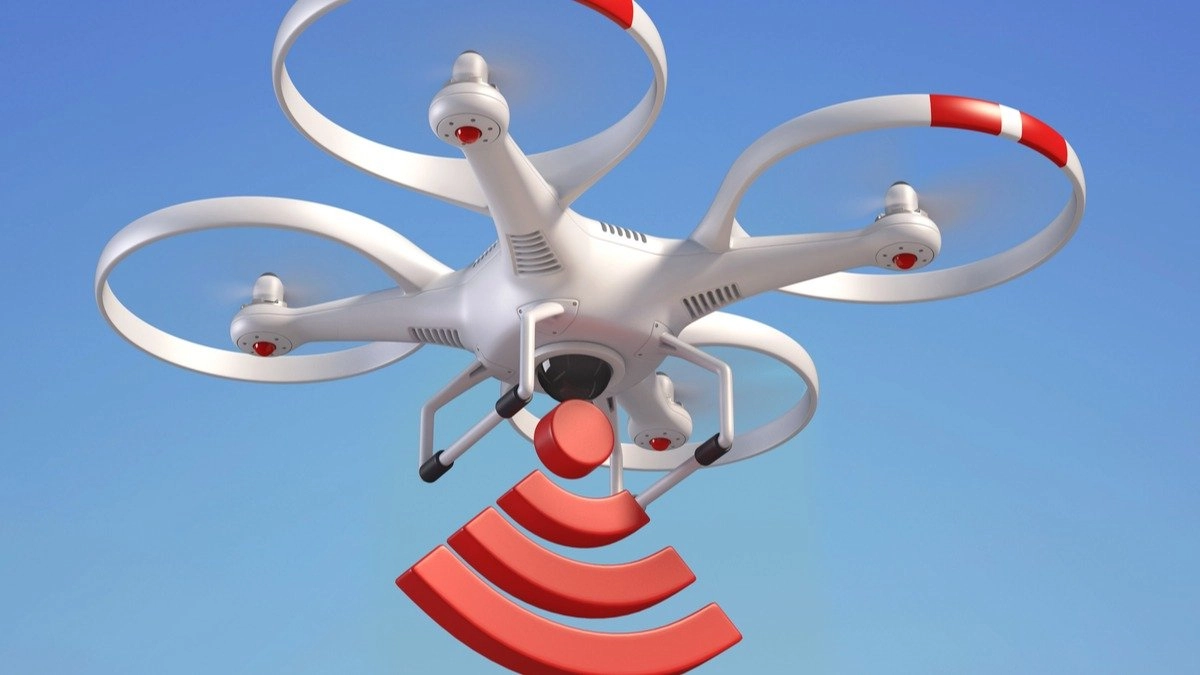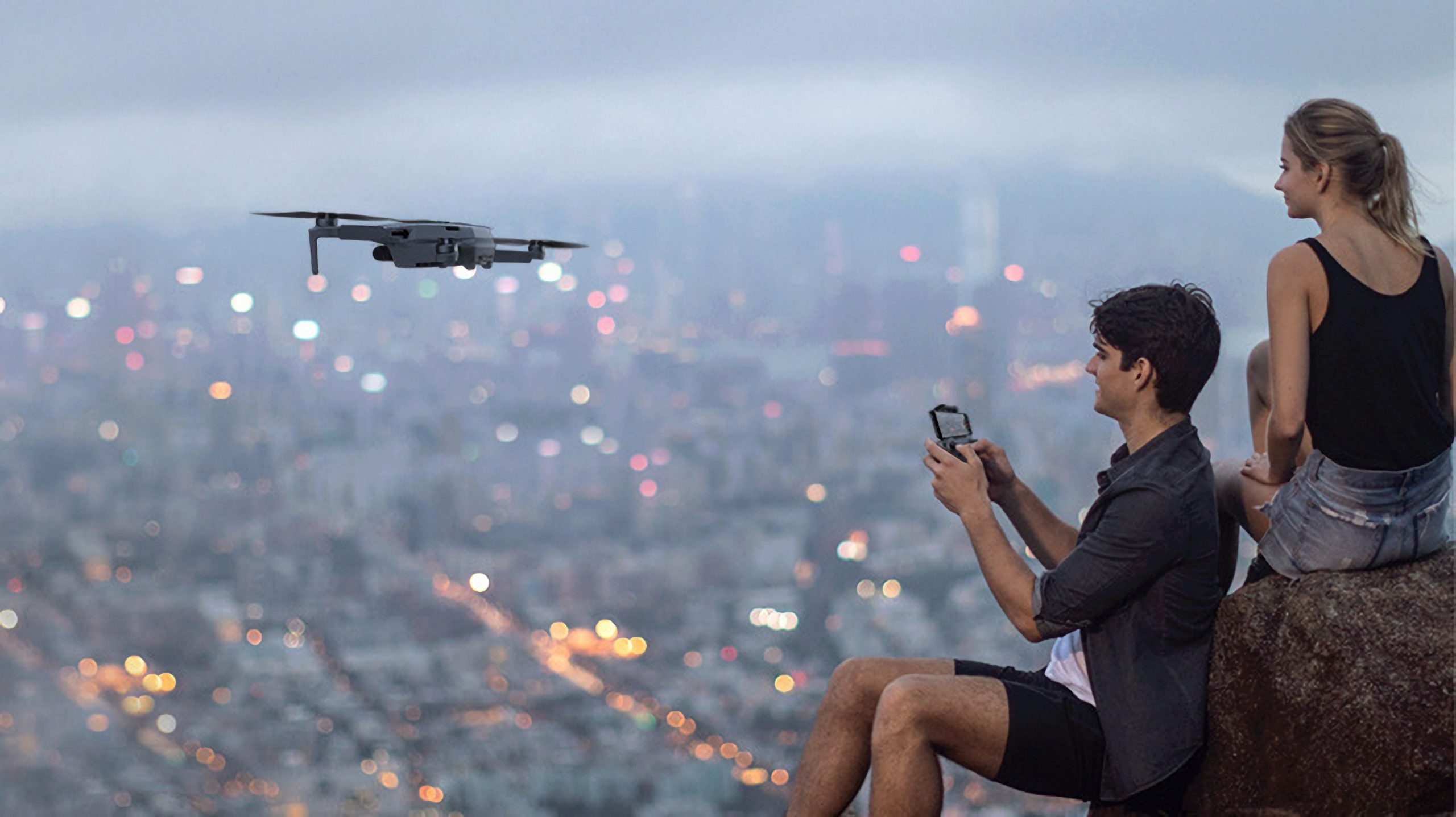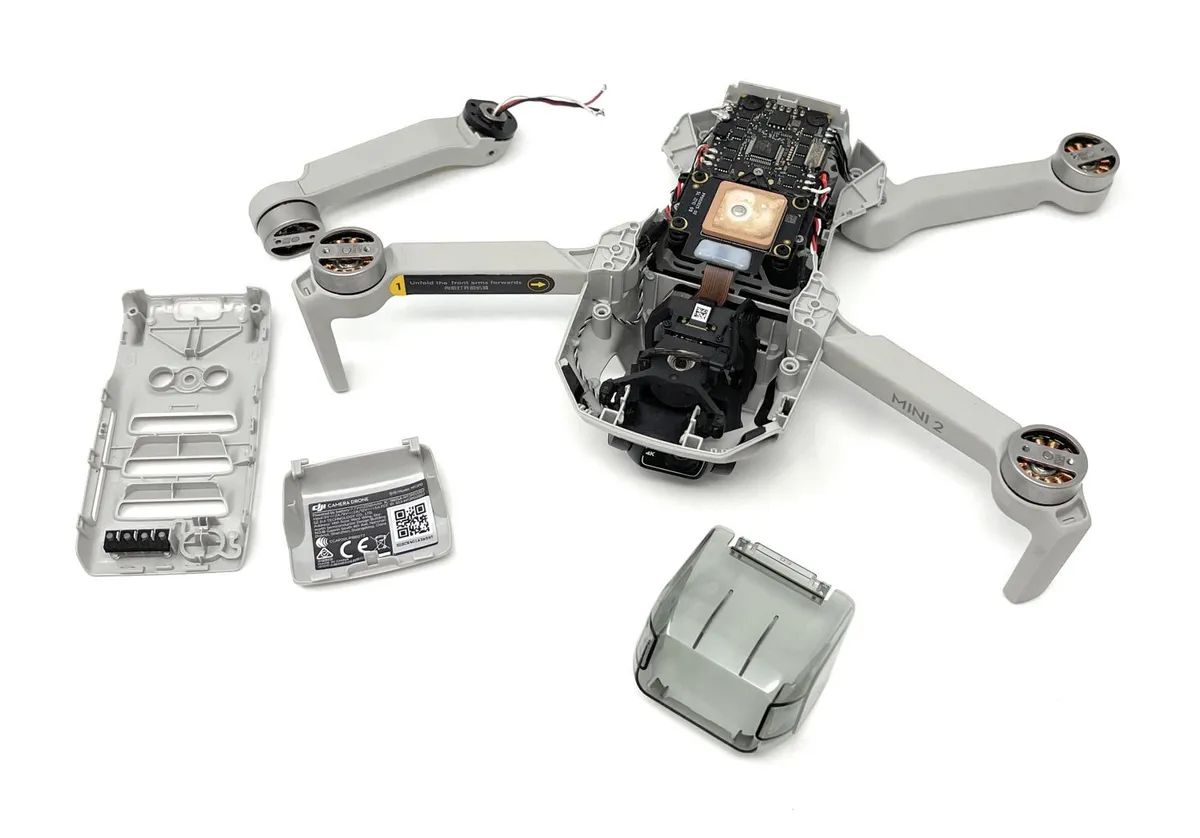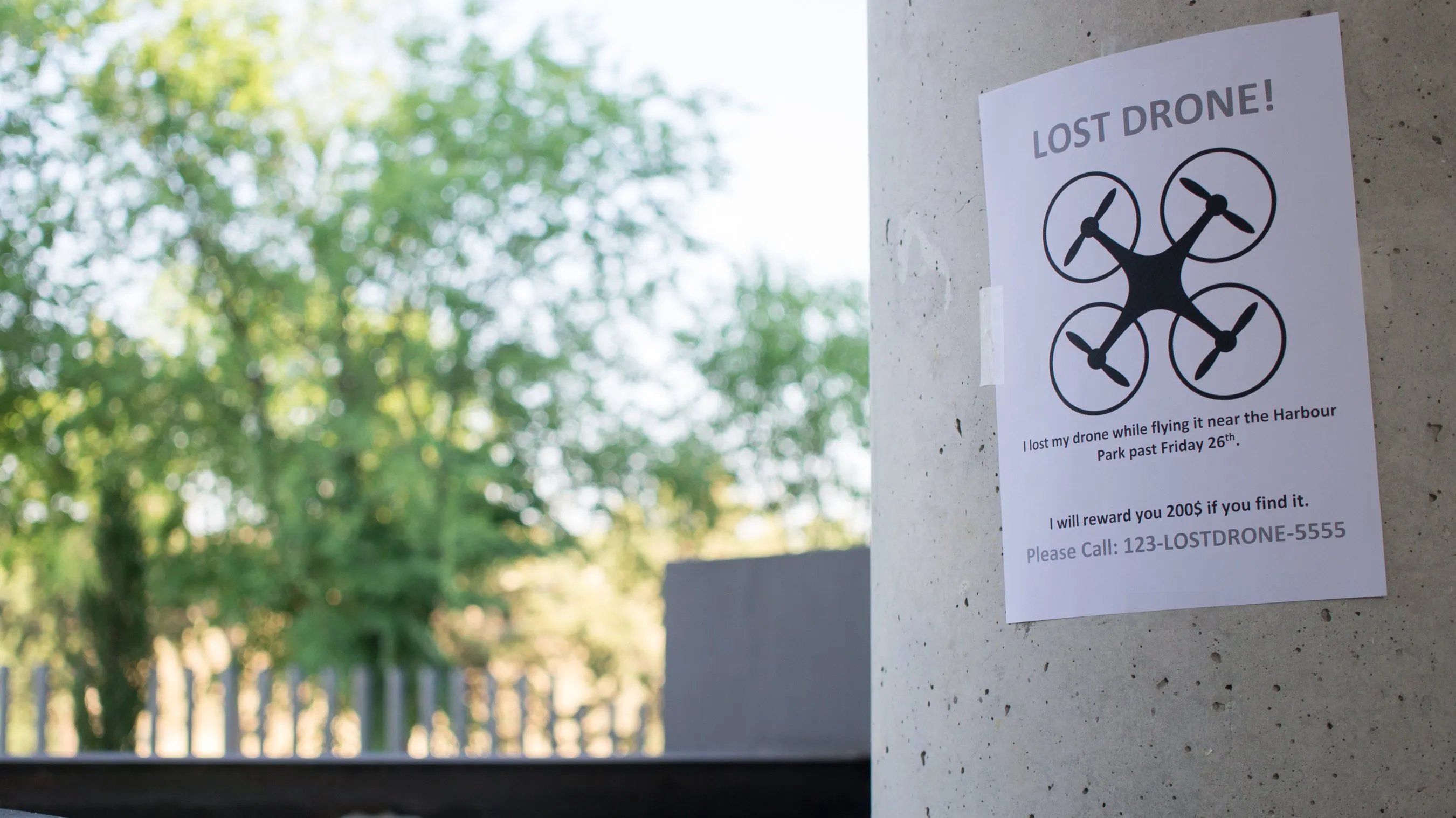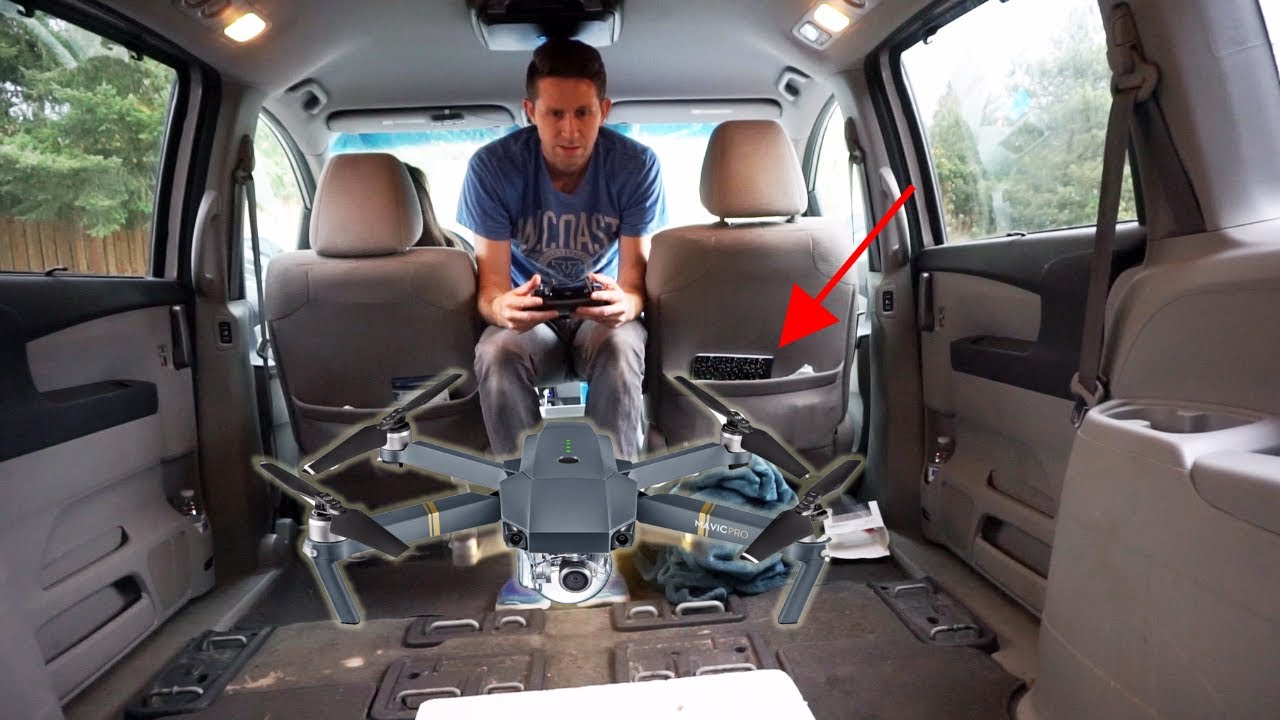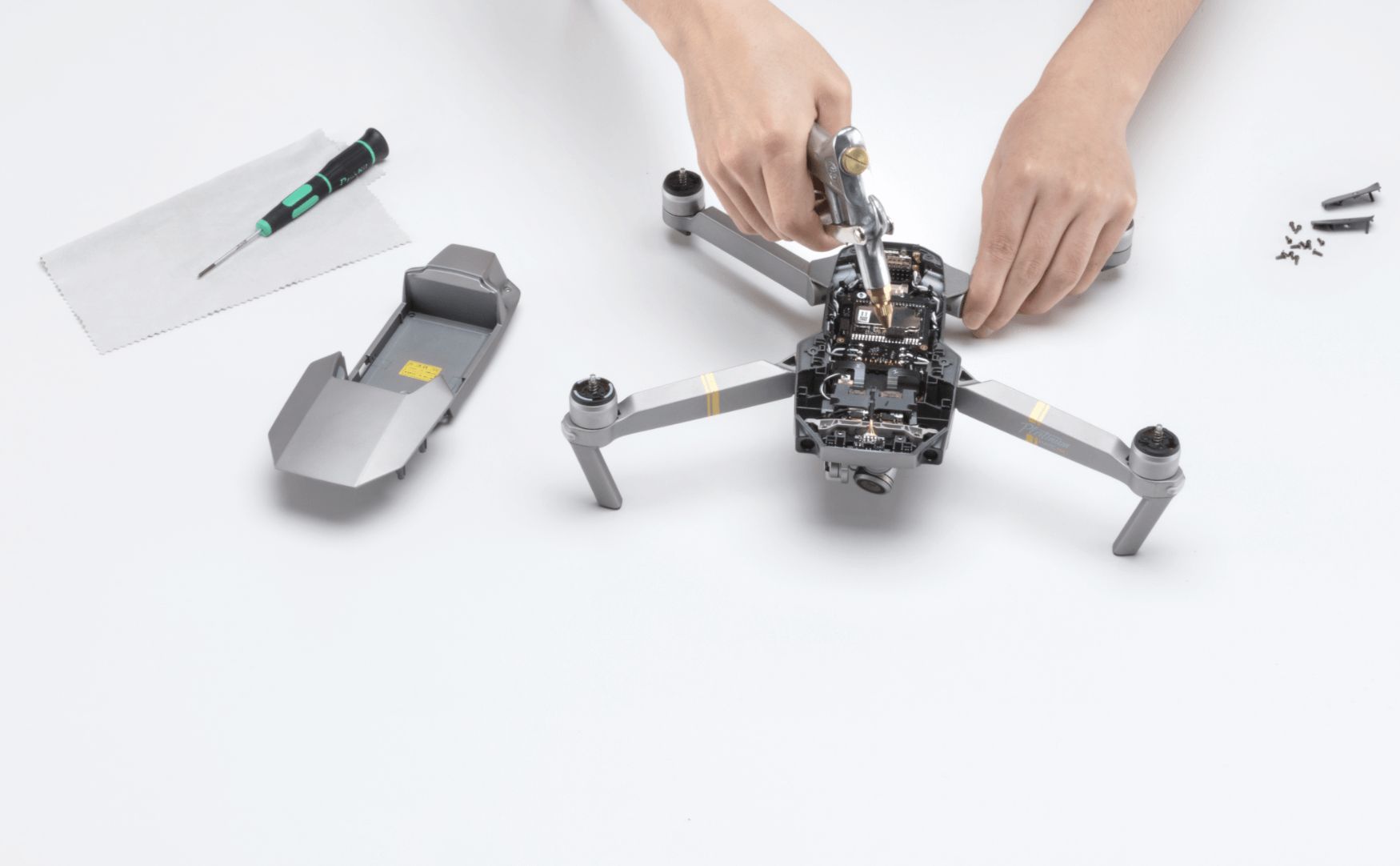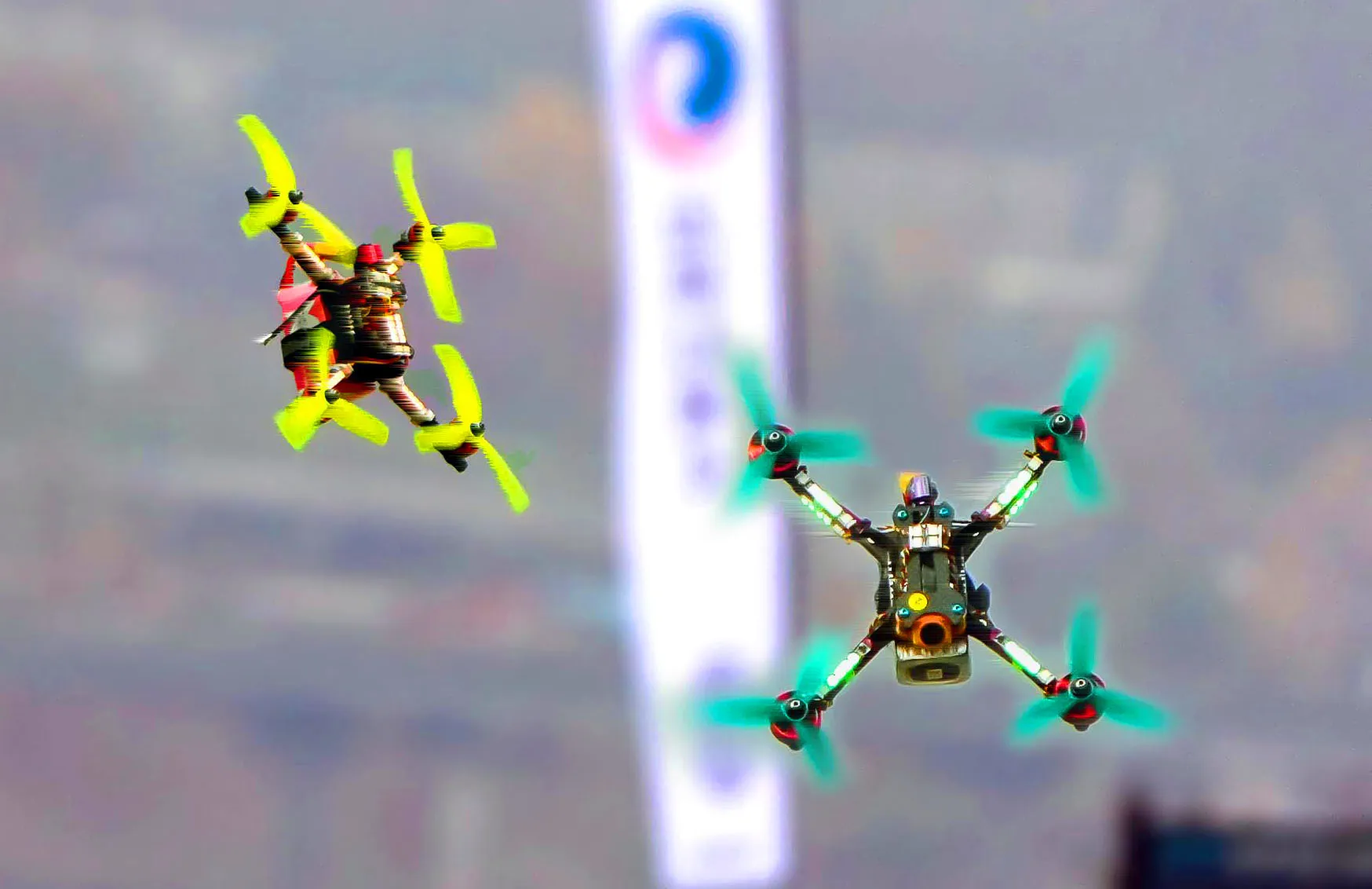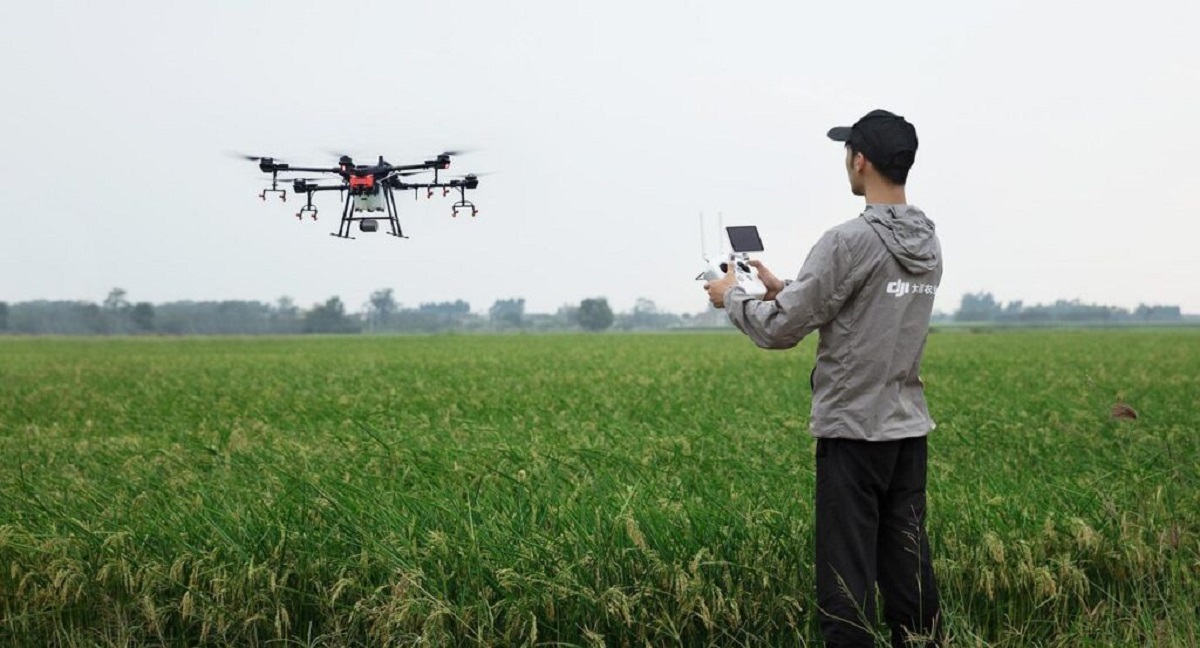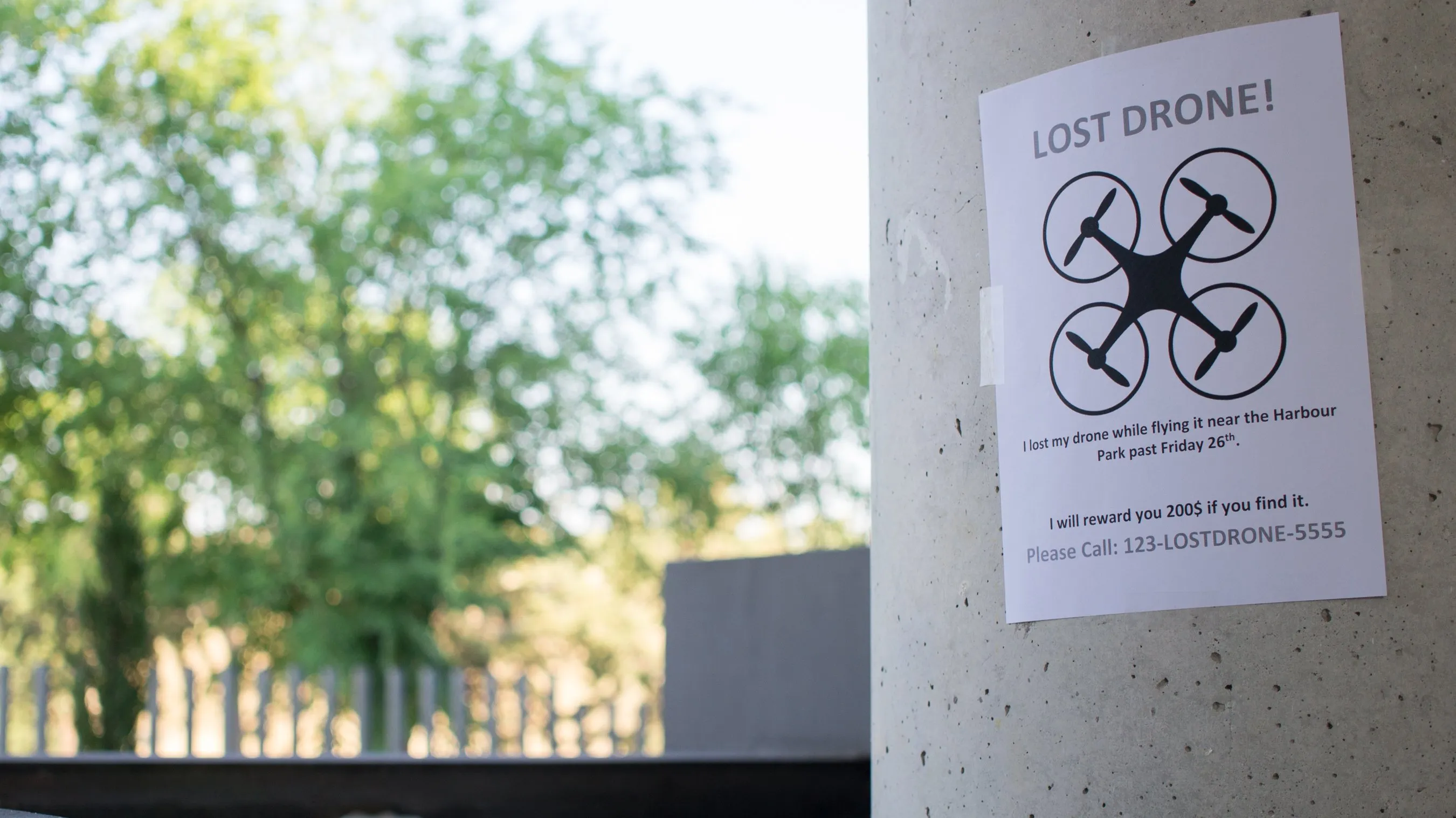Introduction
Drones have revolutionized numerous industries, from aerial photography and surveying to package delivery and search and rescue operations. These versatile unmanned aerial vehicles (UAVs) have the ability to reach areas that are inaccessible or dangerous for humans, capturing breathtaking images and performing tasks with precision. However, one concern that drone operators often encounter is the range limitation of their drones.
Understanding the range of a drone is crucial for ensuring safe and successful flights. The range refers to the maximum distance between the transmitter (controller) and the drone that allows for reliable communication and control. Each drone model has a specific range, usually measured in meters or kilometers, depending on its design and specifications.
In this article, we will explore what happens when a drone goes out of range and the potential risks associated with such a scenario. We will also discuss the measures drone operators can take to mitigate these risks and navigate regulatory considerations.
Let’s delve into the world of drones and their range limitations to better grasp the implications of a drone going out of range and the steps we can take to minimize these risks.
Understanding the Range of Drones
Before delving into the potential scenarios that can occur when a drone goes out of range, it is essential to have a clear understanding of how drone range works.
The range of a drone is primarily determined by its communication system. Most consumer drones use radio frequency (RF) technology for control and transmission of video feed. The transmitter, commonly referred to as the controller, sends signals to the drone, instructing it on various actions such as takeoff, landing, and maneuvering.
Drone range can be influenced by several factors, including the power of the transmitter, the frequency used, and the presence of any obstacles such as buildings or trees that may interfere with the signal. Higher-end drones typically have a longer range due to more advanced communication systems and more powerful transmitters.
It is important to note that the advertised range of a drone may differ from its effective range in real-world conditions. Factors such as electromagnetic interference, weather conditions, and topography can all affect the actual range of a drone. Therefore, it is crucial for drone operators to carefully consider these factors and conduct test flights to determine the reliable range of their specific drone model in different environments.
Additionally, it is essential to differentiate between the control range and the video transmission range. While the control range refers to the distance at which the transmitter can reliably communicate with the drone, the video transmission range determines how far you can stream the drone’s live video feed to a connected device. These ranges may not always be the same, as the video feed can have a shorter range due to limited transmission power compared to the control signals.
By understanding the various factors that impact drone range, operators can make informed decisions and take precautions to prevent the drone from going out of range. In the following section, we will explore one potential scenario that can occur when a drone surpasses its effective range: loss of control.
Possible Scenario: Drone Goes Out of Range
While drone technology has come a long way, the reality is that even the most advanced drones have limitations when it comes to range. It is crucial for drone operators to be aware of the potential risks and challenges that may arise when a drone goes out of range.
One possible scenario is the loss of control. When a drone exceeds its effective range, the signals between the controller and the drone become weak or completely lost. This means that the operator no longer has the ability to control or maneuver the drone. This loss of control can be concerning, especially if the drone is in flight near obstacles or in crowded areas.
In such a situation, the drone may continue on its current path until it reaches the limits of its battery or encounters an obstruction. Depending on the height and speed of the drone, a loss of control can potentially result in a crash, damaging the drone and posing a risk to people or property in the vicinity.
To mitigate the risks associated with a drone going out of range, many drone manufacturers have implemented a feature called “return-to-home.” This feature ensures that if the connection between the controller and the drone is lost, the drone will automatically initiate its return-to-home sequence. This sequence involves the drone autonomously flying back to its takeoff point or a designated landing area.
It is important to note that the return-to-home feature relies on GPS positioning and a strong satellite signal. If the drone is out of range or in an area with poor GPS reception, this feature may not function properly, and the drone may still be at risk of crashing or getting lost.
In the next section, we will further explore the potential risks when a drone loses its connection and discuss ways to mitigate these risks before going out for a flight.
Loss of Control
When a drone goes out of range, one of the primary concerns is the loss of control. Without a reliable connection between the drone and the controller, the operator is unable to maneuver or control the drone. This loss of control can have several potential consequences.
If the drone is in flight when it goes out of range, it may continue on its current trajectory until it reaches the limits of its battery or encounters an obstacle. This can result in a crash and potentially cause damage to the drone itself or any objects or people in its path. Depending on the location and surroundings, this loss of control can have serious consequences.
In certain situations, a drone that has gone out of range may enter a “failsafe” mode. In this mode, the drone tries to maintain a stable hover or slowly descends to the ground in a controlled manner. This feature is designed to minimize the risk of a crash and reduce any potential damage. However, it is important to note that this failsafe mode may not always be effective, especially if there are obstacles in the vicinity or if the drone has lost its orientation.
Another concern when a drone loses control is the potential for flyaways. A flyaway occurs when a drone loses its connection and drifts away uncontrollably, potentially disappearing from sight. This can be particularly problematic if the flyaway happens in a populated area or a location that is difficult to access, as it becomes challenging to recover the lost drone.
Drone operators must be prepared for the possibility of a loss of control and take appropriate precautions to mitigate the risks. This includes maintaining line-of-sight with the drone, monitoring signal strength indicators on the controller, and keeping the drone within the effective range. It is also crucial to avoid flying in areas with high electromagnetic interference or poor GPS reception, as these factors can contribute to signal loss.
Next, we will explore the return-to-home feature, which can help mitigate the risks associated with a loss of control.
Return-to-Home Feature
To address the potential risks associated with a drone going out of range, many drone manufacturers have implemented a valuable safety feature called the return-to-home (RTH) function. The RTH feature is designed to automatically guide the drone back to its takeoff point or a predetermined landing area if the connection between the drone and the controller is lost.
The return-to-home function relies on GPS positioning and a strong satellite signal to accurately navigate the drone back to its designated location. When activated, the drone will autonomously calculate the most efficient flight path to return to the designated point, taking into account factors such as obstacles and wind conditions.
Upon activating the return-to-home function, the drone will ascend to a preset altitude to ensure it clears any potential obstacles in its path. It will then navigate back using GPS coordinates until it reaches its destination. The drone may also activate any obstacle avoidance systems it has, such as collision sensors, to ensure a safe return flight.
It’s important to understand that the return-to-home function is not foolproof and has its limitations. If the drone goes out of range while flying near obstructions or in areas with poor GPS reception, the RTH function may not perform as expected, and the drone may still be at risk of crashing or getting lost.
To ensure the successful execution of the return-to-home feature, drone operators should regularly update their home point location, ensure proper GPS calibration, and periodically test the RTH function in open areas to assess its reliability. Furthermore, maintaining a strong GPS signal and avoiding areas with potential signal interference can increase the effectiveness of the feature.
However, it is essential for drone operators not to solely rely on the return-to-home feature and to always maintain situational awareness during flights. Being proactive and attentive to the drone’s behavior and surroundings can help detect potential issues early on and take appropriate actions to avoid accidents or loss of control.
By utilizing the return-to-home function as a safety measure and understanding its limitations, drone operators can add an extra layer of protection in case of signal loss or out-of-range situations.
Signal Loss and Drone Crash
One of the most concerning outcomes when a drone goes out of range is the possibility of a signal loss, which can lead to a drone crash. In situations where the connection between the drone and the controller is lost, the drone becomes vulnerable and may behave unpredictably.
When a drone experiences signal loss, it can no longer receive commands from the controller, leading to a loss of control. Depending on the circumstances, the drone may hover in place, descend slowly, or continue on its last known path. This lack of control increases the risk of a collision with obstacles, such as trees, buildings, or even other aircraft, which can result in damage to the drone and pose a threat to people or property in the vicinity.
Furthermore, in the event of a signal loss, the drone may not be able to activate its return-to-home feature effectively. Factors such as poor GPS reception or the drone being out of range can hinder the drone’s ability to navigate back to its takeoff point autonomously. This can further elevate the risk of a crash.
It is worth mentioning that the consequences of a drone crash can go beyond physical damage. Depending on the circumstances, a drone crash may violate privacy laws, pose a threat to public safety, or cause disruptions in sensitive areas. Therefore, it is essential for drone operators to take necessary precautions to minimize the chances of signal loss and potential crashes.
To mitigate the risk of signal loss and drone crashes, drone operators should always maintain line-of-sight with the drone, fly in open areas with minimal obstruction, and monitor the signal strength indicators on the controller. Additionally, staying updated on the latest firmware updates for both the drone and the controller can help improve communication reliability and reduce the chances of encountering signal interference.
By being aware of signal loss risks and taking proactive measures to ensure signal reliability, drone operators can minimize the likelihood of a drone crash caused by going out of range. However, it is important to remember that external factors, such as weather conditions and electromagnetic interference, can still impact signal strength and should be taken into account during flight planning.
Mitigating Risks: Preparing for Signal Loss
Although signal loss is a potential risk when a drone goes out of range, there are steps that drone operators can take to mitigate these risks and enhance the overall safety of their flights. By preparing for the possibility of signal loss, operators can minimize the chances of crashes or other undesirable outcomes.
First and foremost, it is crucial to familiarize yourself with the effective range of your specific drone model. Understanding the limitations of your drone’s range will help you plan your flights accordingly and avoid pushing the boundaries that could lead to signal loss. Keeping the drone within a range where the communication signals remain strong and stable is the key to preventing signal-related issues.
Before each flight, conduct a thorough pre-flight check of both the drone and the controller. Ensure that the battery levels are sufficient, the firmware is up to date, and all components are in proper working condition. Regular maintenance and updates can improve communication reliability and reduce the risk of signal loss.
Furthermore, it is advisable to maintain a clear line-of-sight with the drone during flight. Obstructions such as trees, buildings, or even large crowds can interfere with the signal transmission and increase the likelihood of signal loss. By flying in open areas with minimal obstacles, drone operators can reduce the risk of signal interference and maintain better control over their drones.
Another preventive measure is to be mindful of environmental factors that can affect signal strength. Electromagnetic interference from power lines, radio towers, or other electronic devices can disrupt the drone’s communication system. Therefore, it is advisable to avoid flying in areas with high levels of electromagnetic interference to minimize the risk of signal loss.
Lastly, consider using signal extenders or range boosters as additional tools to enhance signal strength and increase the effective range of your drone. Some manufacturers offer accessories that can amplify the communication signal, allowing for more reliable and extended control over the drone.
By taking these precautions and being well-prepared for the possibility of signal loss, drone operators can significantly reduce the risks associated with flying out of range. Prioritizing safety and implementing preventive measures will not only protect the drone itself but also ensure the well-being of people and property in the surrounding areas.
Drone Tracking Technologies
As drone technology continues to advance, so do the tracking and monitoring capabilities available to drone operators. Drone tracking technologies play a vital role in improving flight safety, locating lost or malfunctioning drones, and ensuring accountability for responsible drone operation.
One of the most common tracking technologies used in drones is GPS (Global Positioning System). GPS enables drone operators to accurately determine the drone’s location and track its movement in real-time. This technology not only helps operators maintain situational awareness but also aids in retrieving a lost drone by providing the last known coordinates.
Enhancements in GPS technology have led to the development of more advanced features, such as geofencing. Geofencing allows drone operators to define virtual boundaries for their drones. If a drone exceeds these predetermined boundaries, an alert is triggered, providing the operator with a warning that the drone may be going out of range or entering restricted airspace.
Another tracking technology gaining popularity is RF (Radio Frequency) tracking. RF tracking systems, such as radio frequency identification (RFID) tags or transponders, can be attached to drones to enable their tracking and identification. This technology helps in locating lost drones or identifying drones in crowded airspace where visual identification may be challenging.
In addition to GPS and RF tracking, digital identifiers, such as unique drone identification numbers or registration codes, provide a means of identifying individual drones. This identity information can be stored in a centralized database, making it easier to track and trace drone ownership and flight history, enhancing accountability and responsible drone usage.
Moreover, advancements in drone tracking technologies have led to collaborations between drone manufacturers and software developers to create innovative solutions. Mobile apps and software platforms now offer drone tracking features that allow operators to monitor their drones in real-time, receive flight telemetry data, and even set up custom alerts for critical events like low battery or out-of-range situations.
It is worth noting that while these tracking technologies provide valuable tools for drone operators, they also come with privacy considerations. Striking a balance between safety and privacy is crucial, with regulations and guidelines in place to ensure responsible and ethical use of drone tracking technologies.
By leveraging drone tracking technologies, operators can enhance flight safety, minimize the risks associated with going out of range, and ensure responsible operation. As technology continues to advance, we can expect further developments in drone tracking systems, enabling even more efficient and secure drone operations.
Regulatory Considerations
When it comes to drone operations, there are various regulations and guidelines that must be followed to ensure safe and responsible flying. Regulatory considerations play a crucial role in mitigating the risks associated with drones going out of range and promoting the overall safety of drone operations.
Most countries have their own aviation authorities that oversee the regulations and guidelines for drone operations. These regulations often include restrictions on flight altitude, flight range, and operating within line-of-sight. It is essential for drone operators to familiarize themselves with the specific regulations in their country and adhere to them to avoid penalties or legal consequences.
One important consideration is the requirement for drone registration. Some regulatory bodies mandate that drones above a certain weight must be registered, providing a unique identification number that can be used for tracking purposes. Registration helps enhance accountability and enables authorities to track and trace a lost or out-of-range drone back to its owner.
Additionally, airspace restrictions and designated no-fly zones are established to safeguard critical infrastructure, controlled airspace, or areas of national security. Drone operators must be aware of these restricted areas and avoid flying in them to prevent potential accidents or interference with other operations.
Another regulatory consideration is the requirement for remote identification. Some jurisdictions are implementing regulations that would require drones to have a remote identification system to broadcast their identification information during flight. This facilitates the identification of drones and assists law enforcement or authorities in addressing any issues related to out-of-range or lost drones.
Furthermore, regulatory bodies are continuously evolving their rules and guidelines to keep pace with advancing drone technology. Drone operators must stay up-to-date with the latest regulations, check for any changes or updates, and ensure compliance to maintain safe and legal operations.
It is also essential for drone operators to have insurance coverage that protects against potential risks and liabilities arising from drone operations. Insurance coverage can provide financial protection in the event of accidents, property damage, or injuries caused by a drone going out of range or experiencing loss of control.
By adhering to regulatory considerations and guidelines, drone operators not only ensure their own safety and the safety of others but also contribute to the responsible and sustainable growth of the drone industry. It is crucial to understand and comply with these regulations as they help maintain a consistent framework for safe and seamless drone operations.
Conclusion
Understanding the range limitations of drones and the potential risks associated with going out of range is essential for drone operators. Loss of control, signal loss, and drone crashes are some of the challenges that drone operators may face when a drone exceeds its effective range. However, by taking proactive measures and being aware of the available safety features, operators can mitigate these risks and ensure responsible drone operation.
The return-to-home feature, GPS tracking, and advancements in drone tracking technologies provide valuable tools to enhance flight safety and minimize the consequences of signal loss or out-of-range situations. Additionally, regulatory considerations play a vital role in promoting safe drone operations and ensuring accountability for drone owners and operators.
Drone operators must familiarize themselves with the regulations and guidelines in their respective countries, including requirements for drone registration, airspace restrictions, and any updates or changes to the rules. Adhering to these regulations helps maintain safe and legal drone operations and contributes to the sustainable growth of the drone industry.
By staying informed, being prepared, and applying best practices, drone operators can minimize the risks associated with drones going out of range. Maintaining situational awareness, conducting regular equipment checks, and flying in open areas with minimal obstructions are some precautionary measures to consider. It is also important to recognize the limitations of drone technology and exercise caution to prevent accidents or injuries.
As drone technology continues to evolve, it is critical for operators to stay up-to-date with the latest advancements and regulations. By prioritizing safety and responsible operation, we can unlock the full potential of drones while ensuring the well-being of people and property in the surrounding areas.







